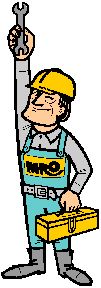
Tips for bearings and chain
Why bearings fail earlyProblem: Ever wonder why a new bearing starts showing problems soon after installation? It might be simply because of the way it was stored, suggests Sphere Tech Analysis Inc., ...
April 1, 2002 | By MRO Magazine

Why bearings fail early
Problem: Ever wonder why a new bearing starts showing problems soon after installation? It might be simply because of the way it was stored, suggests Sphere Tech Analysis Inc., a bearing failure and lubrication analysis firm based in Winnipeg.
Solutions: If bearings are stored on shelves in an area where vibration occurs — say from machinery operating on the other side of the storeroom wall — over time, the vibration can cause permanent indentations in the raceways of the bearings. It’s a common enough occurrence to get its own name — false brinelling damage.
Although the bearing looks fine when you take it out of the box, the damage already exists in the bearing, and will lead to an early failure immediately after it is put into service. Make sure bearings are stored in a quiet, vibration-free location.
Bearings may look like tough pieces of steel, but they are highly precision components and should be treated as such. Storage and handling procedures are critically important.
Make sure the humidity level in the storage area is less than 60 per cent. Keep the bearings in their original packaging, with the factory rust-preventative coating intact. Stack ball and roller bearings on their sides; never store them standing vertically.
If the bearing storage area is colder than the area where the bearing is being installed, let it warm up to the ambient temperature before operating it, as the lower temperature could affect the viscosity of the lubricant and result in unexpected wear upon startup of the equipment.
Why chain fails early
Problem: When specifying transmission chain with a safety factor of 8:1 on the breaking load, the side plates on the chain will still break unexpectedly.
Solutions: Although an 8:1 safety factor on breaking load is a confident choice, in reality, that factor may only yield a factor of 5:1 in some applications, when the instantaneous overload of the drive is considered.
According to advice from Renold Chain, here are the reasons:
Most chain side plates are made from low- to medium-carbon steel and are sized to ensure they have adequate strength and ductility to resist shock loading. These steels have yield strengths of around 65 per cent of their ultimate tensile strength. But if the chain is subjected to loads greater than this, then permanent pitch extension can occur, depending on the material used in the side plates.
Most applications are subject to transient dynamic loads well in excess of the maximum static load and usually greater than the designer’s estimate. Motors, for example, are capable of up to 200 per cent full load torque output for a short period.
Another element to consider that affects the safety factor is the required chain life. In a properly maintained application, a life of 8 million cycles or 15,000 hours is normal. Wear will be the usual mode of failure.
If the chain is operating in anything other than a clean and well-lubricated environment, then the safety factor should be adjusted upwards, otherwise the working life will be affected. Low temperatures will also decrease working life, especially if shock loads are involved.
For example, a regularly lubricated chain operating in a clean environment may require a safety factor of 8:1, but that would rise to 12:1 in a dirty or abrasive situation, and to 14:1 if lubrication was done only occasionally. If very low temperatures also apply, and heavy shock loads tend to occur, the safety factor may need to be specified as 25:1 or even 33:1.
As you can see, a basic rule of thumb may not result in long operating life for transmission chain. For best results, refer to a manufacturer’s chain design guide or get advice directly from its expert technical staff.
Do you have a solution for a maintenance problem? Send it in and if it’s published, we’ll send you a free Mr. O Problem Solver T-shirt and $35.00. Include your address and telephone number, print complete details, and add a sketch to help explain your tip. Send your ideas to Mr. O, Machinery & Equipment MRO, 1450 Don Mills Rd., Don Mills, Ont. M3B 2X7.
